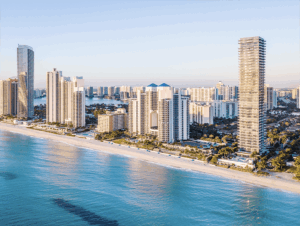The Miami-Dade real estate market is experiencing a complex transformation in 2025, marked by a pronounced shift toward buyer-favorable conditions while maintaining its position as America’s premier destination for international real estate investment. Miami leads international buyer interest, accounting for 8.7% of all international demand in the U.S. in the first quarter of 2025, underlining its enduring global appeal amid evolving market dynamics.
Market Transition: From Seller to Buyer Advantage
The Miami-Dade housing market has entered a transitional phase, moving away from the seller-dominated conditions that characterized previous years. In April 2025, the county registered 20,735 homes for sale, representing an 8.6% increase from March, while the number of completed transactions decreased by 14.1% month-over-month to 1,604 sales.
This inventory increase, coupled with reduced sales velocity, signals a cooling market environment. Significantly, 76.3% of homes sold in April traded below asking price, suggesting enhanced negotiation power for buyers—a marked departure from recent market conditions where sellers held pricing leverage.
Ultra-Luxury Segment Defies Broader Trends
Despite overall market cooling, the ultra-luxury sector continues demonstrating exceptional strength. Sales above $20 million more than doubled year-over-year, with 17 transactions exceeding $20 million in 2025 compared to only 7 in 2024, including 4 sales above $50 million. This dramatic increase underscores the continued appeal of Miami’s premium properties among ultra-high-net-worth individuals.
Luxury single-family homes priced at $1 million and above registered a 3.1% increase in sales compared to the previous year, while luxury condominiums priced above $1 million experienced a 122.2% surge compared to pre-pandemic levels. This performance reflects the segment’s resilience to broader market pressures and interest rate sensitivity.
Price Appreciation Amid Market Moderation
Despite cooling transaction volumes, home prices have maintained upward momentum. The median home price in Miami-Dade County reached $575,000 in February 2025, reflecting a 9.5% year-over-year increase. Within Miami city limits, the median sold price in April stood at $585,104, up 7% from the previous year.
However, price performance varies significantly by location. Certain areas, including El Portal, experienced a 10.9% decrease in median sold prices year-over-year, highlighting the importance of micro-market analysis in understanding local conditions. Miami single-family median prices have risen for 159 consecutive months (13.25 years), representing the longest running streak on record.
International Investment Drives Market Fundamentals
Miami’s position as a global real estate destination remains unassailable. South Florida’s foreign buyer share represents 10% of total residential purchases by dollar volume, five times larger than the U.S. average of 2%. Miami-Dade County had the largest net international migration in the United States, with the Miami-Fort Lauderdale-West Palm Beach metro area accounting for 49% of Florida’s foreign buyer market.
Colombia emerged as the top foreign country purchasing South Florida real estate in 2024, while Argentina and Colombia together account for 32% of all international closed sales. Foreign buyers demonstrate strong purchasing power, with 66% of all international residential transactions completed in cash, well above national averages.
Tax Advantages Fuel Migration Patterns
Florida’s favorable tax environment continues attracting both domestic and international buyers. Florida imposes no personal income tax, no estate tax, and no inheritance tax, creating substantial financial advantages for high-net-worth individuals. New York, California, and New Jersey accounted for 47% of all out-of-state buyers in the Miami area in 2024, reflecting continued migration from high-tax jurisdictions.
The corporate sector has responded similarly, with major financial institutions and hedge funds relocating operations to Miami. Citadel, managing $57 billion in assets, relocated from Chicago and is building a $1 billion Miami office tower, exemplifying the broader corporate migration trend.
Condominium Market Faces Headwinds
The condominium sector encounters distinct challenges, particularly affecting older buildings. Stricter regulations implemented following the Surfside collapse have led to increased maintenance costs and special assessments, impacting affordability and buyer interest. Consequently, condo and co-op prices have declined approximately 7%, with inventory levels reaching new highs.
Miami faces an oversupply of luxury condos, with condo vacancy rates increasing housing supply to 11.4 months as of January 2025, up from 8.07 months in January 2024. This oversupply has created a buyer’s market in the condominium segment, contrasting with the single-family home market which remains seller-favorable.
Development Pipeline and Supply Dynamics
Miami and Fort Lauderdale currently have 84 new condo projects in the pipeline, with 75 priced between $1.5 million and $100 million, though only 12 are actually under construction. This substantial development pipeline awaits more favorable interest rate conditions before proceeding to construction phases.
The luxury development sector continues attracting investment, with new projects planned across premier neighborhoods including Coral Gables, Coconut Grove, and Brickell. These developments target both domestic buyers seeking tax advantages and international investors attracted to Miami’s global connectivity and lifestyle appeal.
Economic Impact and Broader Implications
Each typical home sale generates approximately $123,000 in economic activity, reflecting the real estate market’s essential role in Miami’s broader economy. The city’s employment rate is expected to grow by 2.4% annually through 2025, with tourism, technology, and real estate sectors contributing to positive economic expansion.
Looking ahead, industry forecasts suggest moderate price growth, with projections indicating a 4% increase in home values for 2025. The market’s trajectory will likely be influenced by mortgage rate movements, inventory levels, and regulatory changes affecting the condominium sector.
For buyers, the current environment offers increased opportunities through expanded listings and enhanced negotiating power. Sellers may need to adjust expectations and pricing strategies to align with evolving market conditions, particularly in segments experiencing oversupply.
The luxury condo market is expected to continue as a balanced market, offering both buyers and sellers equal value and opportunity in a global city positioned for growth. Despite short-term market adjustments, Miami’s fundamental attractions—tax advantages, international connectivity, lifestyle appeal, and economic diversification—suggest continued long-term strength in the luxury and ultra-luxury segments.
The convergence of domestic migration patterns, international investment flows, and economic growth positions Miami’s real estate market for sustained performance, even as individual segments navigate varying conditions. For investors and residents alike, Miami’s unique combination of financial advantages and lifestyle benefits continues driving demand across multiple market segments, reinforcing its status as America’s premier international real estate destination.
Richard Tayar is the founder of Columbus International, an international real estate firm bridging markets between the United States and Italy, with focus on New York, Milan, Florence, and Miami.



